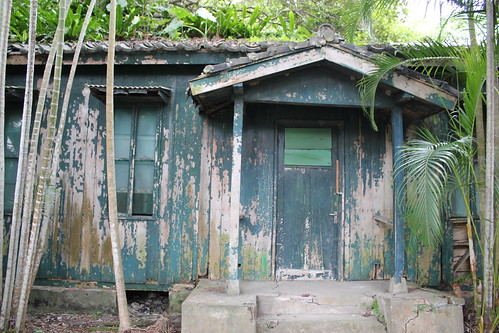Subscribe to:
Post Comments (Atom)
Taiwan's Secret Pyramids
My friend Alain has a YouTube channel focusing on conspiracy theories, reptilians, UFOs, secret doors plus portals, sunken doors and so fort...

-
Banks in Taiwan generally refuse "foreigners" credit cards. I guess they're afraid they won't be able to recoup money (I w...
-
Here's the restroom in our commons' area. The sign reads: "Please don't use." Our cherished monkey bars We're fr...
-
My friend Alain has a YouTube channel focusing on conspiracy theories, reptilians, UFOs, secret doors plus portals, sunken doors and so fort...


4 comments:
Nice shot. Looks like a fairly common Japanese-era cloud onigawara adorning the peak. Interestingly, houses constructed in military villages during the early years of KMT rule used a star onigawara to defend the entranceway. Any idea what the different symbologies represent?
Dionglek
I'm guessing, but a family or clan crest? I can find out though.
Good eye though. This warehouse was built in the early 1950s, or at least five years after the Japanese had left Taiwan. Probably what happened was there was an access of tile left over from the Japanese era at the nearby roofing / construction supplies shop. Nobody would have given it a second thought. The only thing that mattered here was Emperor's Chiang's abode.
The 'onigawara' or devil tile is similar in function to a gargoyle. Not so sure a clan crest would possess the same intimidation as a dragon or celestial symbol.
Dionglek
I asked a Taiwanese friend who regularly looks into issues related to the Japanese colonial era in Taiwan. He told me this:
"'a star onigawara to defend the entranceway'
Isn't that the national (more accurately the KMT) emblem - the sun with 12 pointed rays - that usually adorn the gates?"
Post a Comment